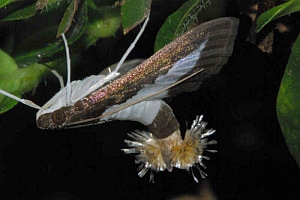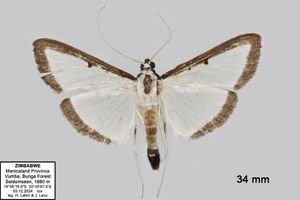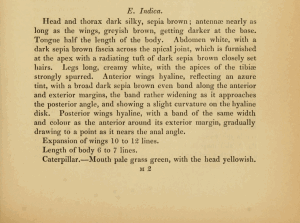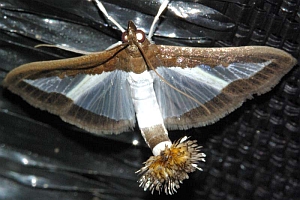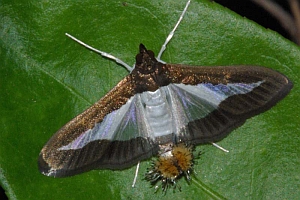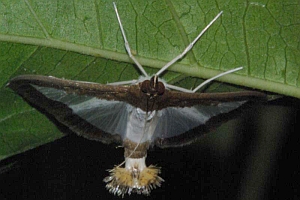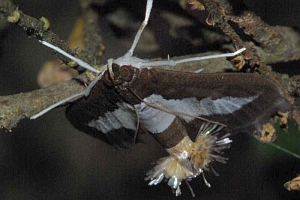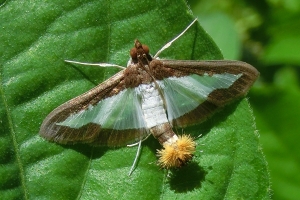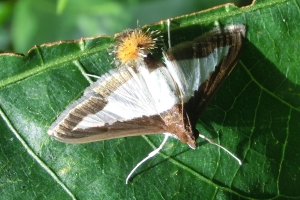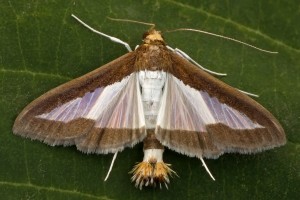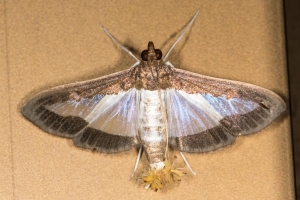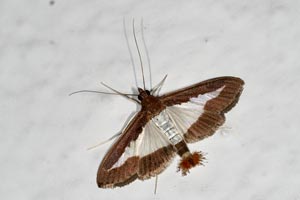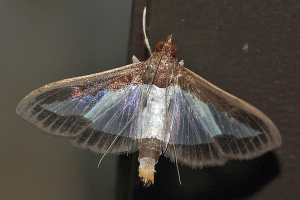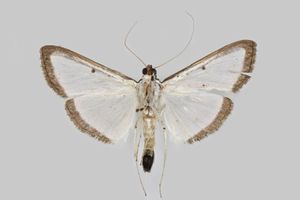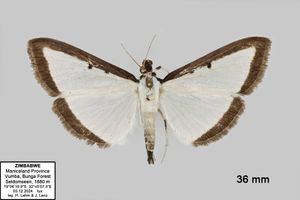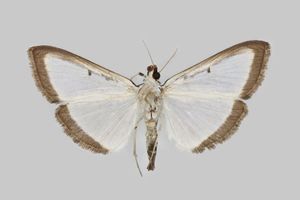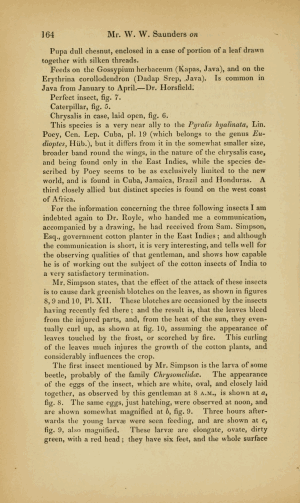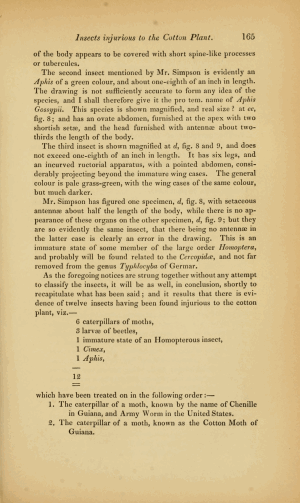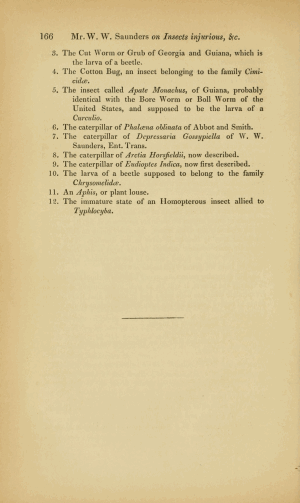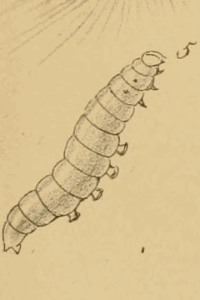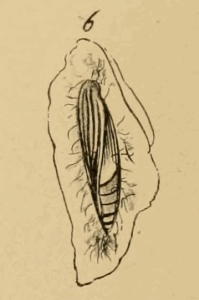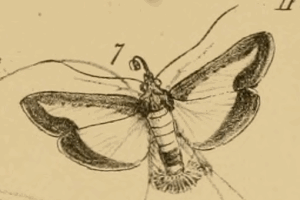

 +74Kontinente:EUASAFNAMAKISAOC
+74Kontinente:EUASAFNAMAKISAOC1. Lebendfotos
1.1. Falter
2. Diagnose
2.1. Männchen
2.2. Erstbeschreibung
3. Biologie
3.1. Nahrung der Raupe
- [Cucurbitaceae:] Cucumis sativus (Gurke)
- [Cucurbitaceae:] Cucumis melo (Zuckermelone, Melone)
- [Cucurbitaceae:] Cucumis melo var. makuwa (Orientalische Melone)
- [Cucurbitaceae:] Citrullus lanatus (Wassermelone)
- [Cucurbitaceae:] Lagenaria siceraria (Flaschenkürbis)
- [Cucurbitaceae:] Benincasa hispida (Wachskürbis)
- [Cucurbitaceae:] Sicyos angulatus (Sterngurke)
- [Cucurbitaceae:] Luffa aegyptiaca [= Luffa cylindrica] (Schwammkürbis, Luffagurke)
- [Cucurbitaceae:] Luffa acutangula (Flügelgurke)
- [Cucurbitaceae:] Momordica charantia (Bittermelone)
- [Cucurbitaceae:] Coccinia grandis [=Coccinia indica] (Große Scharlachranke, Tindola)
- [Cucurbitaceae:] Trichosanthes dioica (Spitzgurke)
- [Cucurbitaceae:] Trichosanthes tricuspidata (Schlangenhaargurke)
- [Cucurbitaceae:] Trichosanthes cucumerina var. anguina (Schlangenhaargurke)
- [Cucurbitaceae:] Cucurbita sp. (Kürbis)
- [Malvaceae:] Gossypium herbaceum ??? (Baumwolle ???)
- [Fabaceae:] Erythrina corallodendron ??? (Echter Korallenbaum ???)
D. indica gilt heute als einer der weltweit bedeutendsten Schädlinge an gepflanzten Kürbisgewächsen (Cucurbitaceae). Gemäß Erstbeschreibung von Saunders (1851: 164) soll die Raupe aber schädlich an Baumwolle und Echtem Korallenbaum sein, also Pflanzen ganz anderer Familien. Konkret heißt es: "Feeds on the Gossypium herbaceum (Kapas, Java), and on the Erythrina corollodendron (Dadap, Srep, Java). Is common in Java from January to April. - Dr. Horsfield." Saunders hat die Raupen also wohl nicht selbst gesehen und seine Beschreibung von Raupe und Puppe ist ziemlich nichtssagend - und da in der Raupenbeschreibung die auffälligen Nebenrückenlinien nicht erwähnt werden, erscheint es fraglich, ob sie überhaupt zu dieser Art gehört. Ich möchte hier sehr von einer Fehlbestimmung der Raupen ausgehen, zumal es bis heute keine weiteren Primärangaben über Schäden dieser Art in Baumwoll-Pflanzungen gibt; die sehr wahrscheinlichen Falschangaben wurden aber unkommentiert weitergeschleppt.
So meldet Clarke (1986: 80): "FOOD PLANTS. — Gossypium herbaceum L., Erythrina corallodendron L., Luffa aegyptiaca Miller, Luffa acutangula (L.) Roxburgh, Trichosanthes anguina L., Trichosanthes palmata Roxburgh, Cucurbita lagenaria (L.) L. (= Lagenaria siceraria (Molina) Standby), "pumpkin and mellon leaves." This is the common "cucumber moth" of the Indo-Australian region, but the species probably attacks other cucurbits more than it does cucumber."
Hosseinzade et al. (2014) fassen - wieder unter Einbeziehung der Baumwolle - zusammen: "The cucumber moth, Diaphania indica (Saunders), also known as cotton caterpillar or pumpkin caterpillar, is a destructive pest on a wide range of crops. The larvae of D. indica attack leaves, flowers and fruit of their plant hosts. Preferred hosts for the larvae of this pest are: cucumber, Cucumis sativus, gourd, Lagenaria siceraria, watermelon, Citrullus lanatus, oriental melon, Cucumis melo var. makuwa, wax gourd, Benincasa hispida, melon, Cucumis melo, star cucumber, Sicyos angulatus, sponge cucumber, Luffa cylindrica, cotton, Gossypium indicum, bitter gourd, Momordica charantia, Little gourd, Coccinia indica, and pointed gourd, Trichosanthes dioica, (Tripathi & Pandy, 1973; Pandy, 1977; Clavijo et al., 1995; Ravi et al., 1998; Capinera, 2001; Choi et al., 2003)."
4. Weitere Informationen
4.1. Andere Kombinationen
- Eudioptes indica Saunders, 1851 [Originalkombination, [sic Fehler im Gattungsnamen!]]
- Eudioptis indica Saunders, 1851
- Phakellura indica (Saunders, 1851)
- Glyphodes indica (Saunders, 1851)
4.2. Synonyme
- Eudioptis capensis Zell, 1852
- Phakellura gazorialis Guenée, 1854
- Phakellura zygaenalis Guenée, 1854
- Phakellura cucurbitalis Guenée, 1862
- Glyphodes intermedialis Dognin, 1904
4.3. Faunistik
Vorkommen auf Madeira und den Kanaren; in Europa im engeren Sinne fehlend. Nach Slamka (2013) gibt es allerdings einen sehr alten Nachweis aus England und einen neueren (27. August 1988) aus Dänemark, wobei es sich sicher um verschleppte Tiere dieser überwiegend tropisch verbreiteten Art handelte. Aus England soll es zudem noch einen Uraltfund der sehr ähnlichen, als Raupe ebenfalls an Cucurbitaceae lebenden Diaphania hyalinata geben (Leraut (2012) und Slamka (2013). Agassiz et al. (2013: 112) führen die Art bei den "adventive species" und schreiben zu England: "Three reported from Devon, C19 & C20 and possibly London, C19. Pantropical."
Nach [Global Biodiversity Information Facility] kommt die Art in Australien, Taiwan, Indien, Japan, Südafrika, Korea, USA, Hongkong, Mosambik, Réunion, Pakistan, China, Namibia, Mexiko, Sri Lanka, Nigeria, Brasilien, Kenia, Singapur, Botswana, Guam, Thailand, Simbabwe, Madagaskar, Philippinen, Seychellen, Fidschi, Papua-Neuguinea, Tansania, Sambia, Bangladesch, Indonesien, Malawi, Malaysia, Swasiland, Ecuador, Französisch-Polynesien, Osttimor, Trinidad und Tobago, Benin, Kamerun, Kolumbien, Costa Rica, Kap Verde, Spanien?, Äthiopien, Gambia, Honduras, Macau, Portugal?, Tonga, Vereinte Arabische Emirate, Bermuda, Bhutan, Demokratische Republik Kongo, Republik Kongo, Cookinseln, Kuba, Curacao, Dominikanische Republik, Mikronesien, Komoren, Nördliche Marianen, Martinique, Nepal, Oman, Puerto Rico, Serbien?, El Salvador und Vietnam vor.
Locus typicus gemäß Erstbeschreibung: Java.
(Autoren: Erwin Rennwald & Michel Kettner)
4.4. Typenmaterial
Clarke (1986: 80) meldet die Festlegung von Lectotypus und Paralectotypus durch M. Shaffer: "Through the courtesy of Mr. Michael Shaffer of the British Museum (Natural History), I quote the following from his letter of 31 May, 1984 concerning indica and its synonyms. With reference to your letter concerning Diaphania indica (Saunders), 1851. I am afraid there is very little information available concerning the type material of the many synonyms. No one has made a serious study of this species as yet and 1 have not seriously examined the available BM material for research/curation purposes. What little information I can provide concerns mostly indica, though I have no doubt that detailed study of available material, which is very considerable, may reveal some syntypic material of at least the three Guenee taxa. For indica I was fortunate some years ago to discover two specimens in the University Museum of Oxford which I am satisfied are Saunders syntypes. I labelled them lectotype and paralectotype respectively. This lectotype designation still awaits publication. If you would like to undertake this designation and somehow add it to your forthcoming Marquesas paper, please feel free to do so. Here are the label details: Lectotype ♂; Eudiotes indica Java, E. Ind. Aust. reg. Dr. Horsfield ; Lectotype Eudioptes indica Saunders det. M. Shaffer, 1979 [lectotype hereby designated]. Paralectotype ♂; Eudioptes Hb. Phakellura L. Gueld. E. indica Saunders Trans. Ent. Soc. NS. 1. p. 163 pi. 12 f. 7 • ^ Java; Paralectotype Eudioptes indica Saunders det. M. Shaffer, 1979. Both specimens are set, the lectotype is mounted upside down and neither specimen has been dissected. Full reference for this name is Saunders, 1851. Trans. Ent. Soc. London new series 1850-51 1:163 pi. 12 figs. 5, 6, 7 Eudioptes, type locality Java."
(Autor: Erwin Rennwald)
4.5. Literatur
- Agassiz, D.J.L., Beavan, S.D. & R.J. Heckford (2013): Checklist of the Lepidoptera of the British Isles. - Royal Entomological Society. 206pp.
- Clarke, J.F.G. (1996): Pyralidae and Microlepidoptera of the Marquesas Archipelago. — Smithsonian Contributions to Zoology, 416: I-III, 1-485. [zum open access-download auf repository.si.edu]
- Hosseinzade, S., Izadi, H., Namvar, P. & A. Samih (2014): Effect of temperature on life table parameters of Diaphania indica (Lep.: Pyralidae) under laboratory conditions. — Journal of Entomological Society of Iran, 34 (3): 9-15. [PDF auf jesi.areeo.ac.ir]
- Leraut, P. (2012): Moths of Europe. Volume 3. Zygaenids, Pyralids 1 and Brachodids. - 599 S.; Verrières-le-Buisson (N.A.P Editions).
- Moghbeli Gharaei, A., Ziaaddini, M., Jalali, M. A. & B. Frerot (2019): Oviposition preference and olfactory response of Diaphania indica (Lepidoptera: Pyralidae) to volatiles of uninfested and infested cucurbitaceous host plants. — European Journal of Entomology 116: 392-401. [PDF auf eje.cz]
- Pandey, P. N. (1977): Host preference and selection of Diaphania indica Saunders (Lep., Pyralidae). — Deutsche Entomologische Zeitschrift, Neue Folge 24 (1-3): 159-173 [Digitalisat und PDF-Download auf onlinelibrary.wiley.com].
- Erstbeschreibung: Saunders, W. W. (1851): On Insects injurious on the Cotton Plant. — The Transactions of the Entomological Society of London. New Series 1: 158-166.
- Slamka, F. (2013): Pyraloidea of Europe (Lepidoptera). Volume 3. Pyraustinae & Spilomelinae. Identification - Distribution - Habitat - Biology. — 357 S., 133 Taf. mit Genitalabb., 31 Farbtaf. mit fast 1100 Bildern – Bratislava (Eigenverlag František Slamka).
- Wakamura, S., Arakaki, N., Kinjo, K. & T. Yasuda (1998): Sex pheromone of the cotton caterpillar, Diaphania indica (Saunders) (Lepidoptera: Pyralidae): Identification and field attraction. Applied Entomology and Zoology. 33: 429-434. [PDF auf zobodat.at]
- Staude H., Picker M. & Griffiths C.(2023): Southern African Moths and their caterpillars (Kindle-Version), Seite 537.
- Pinhey, E.C.G. (1975): Descriptions and colour illustrations of 1183 species. Tafelberg Publishing, Cape Town. Seite 72.










































































